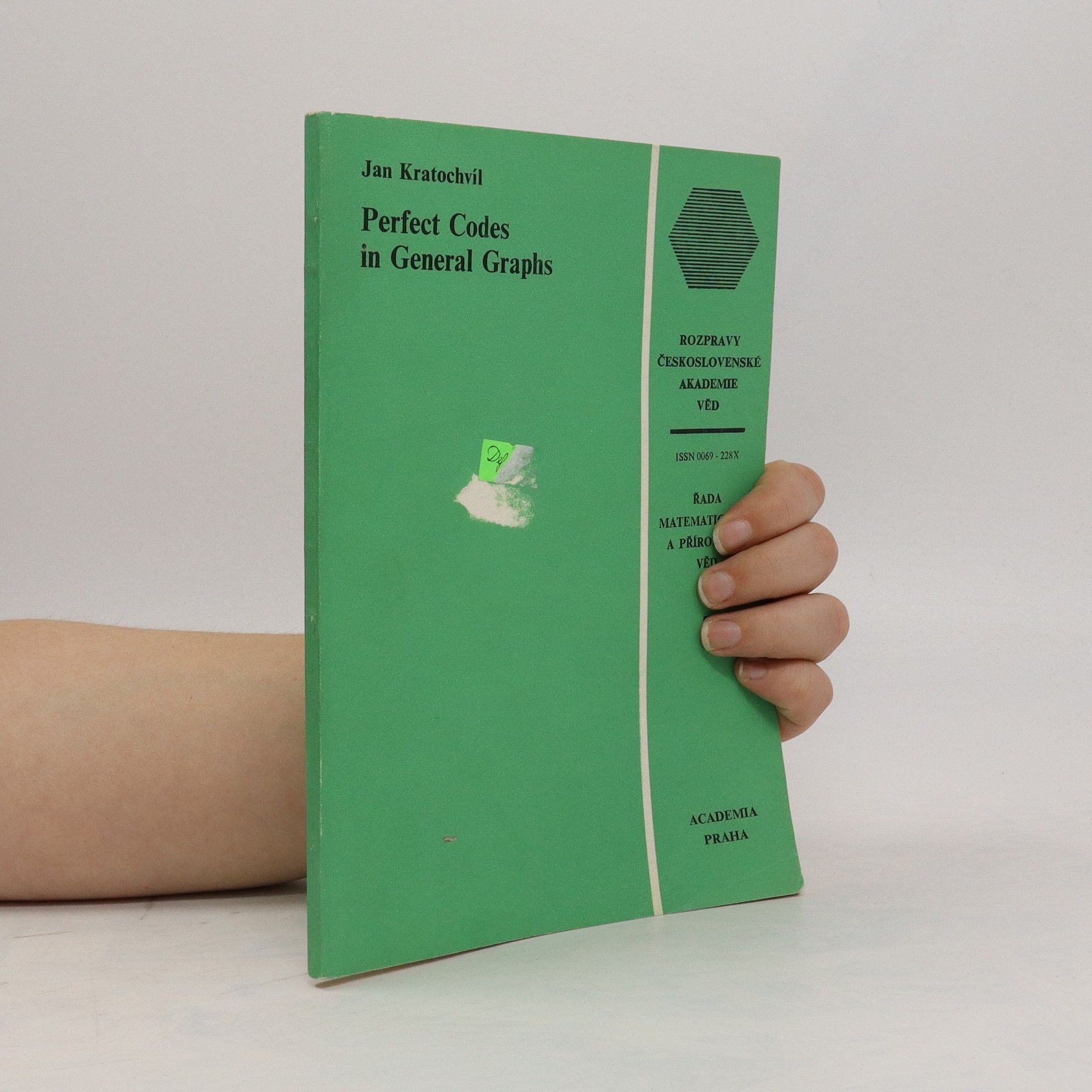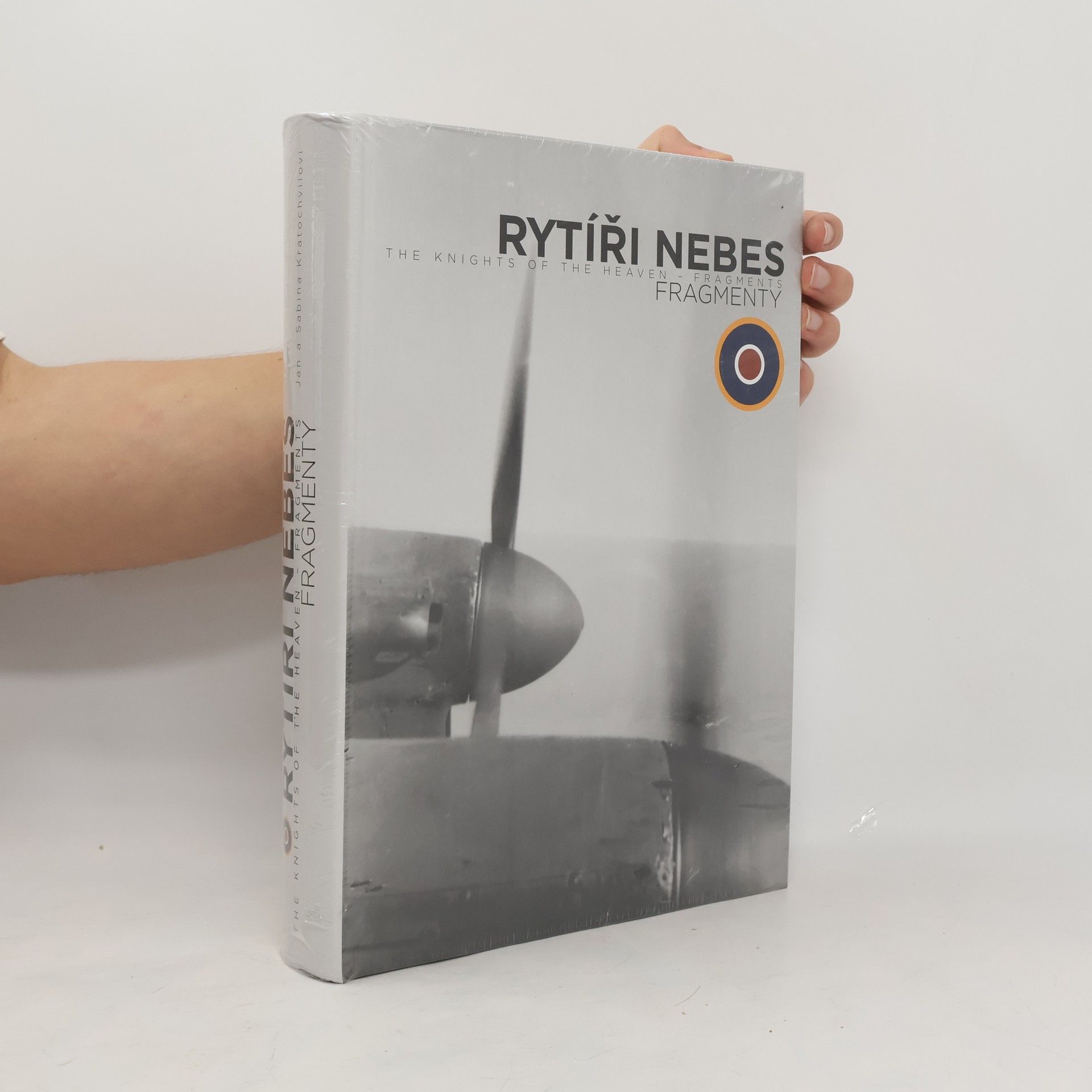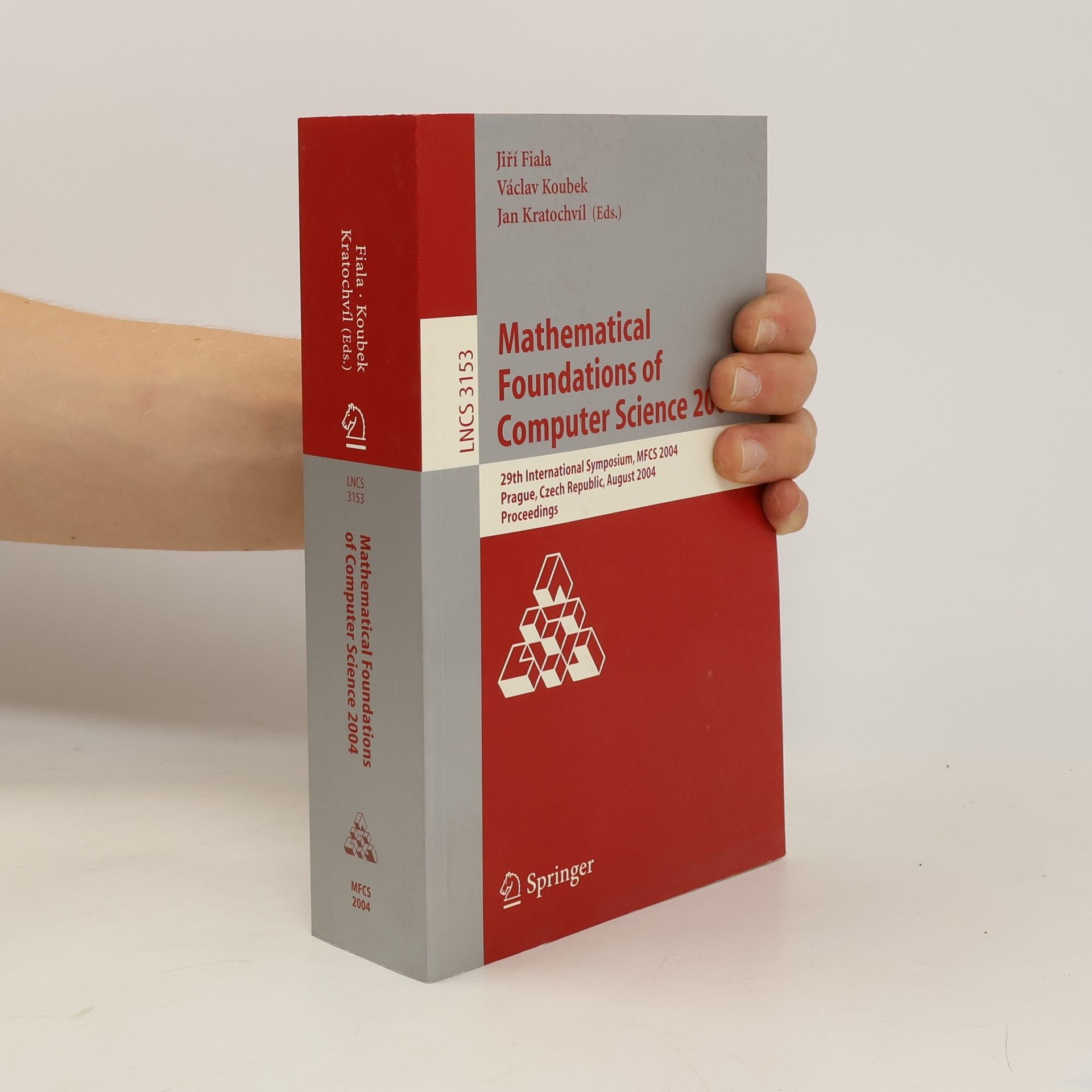Seznam československých letců, kteří během druhé světové války bojovali v řadách RAF. Informace o činnosti příslušníků československého letectva v letech 1939-1945, fotografie.
Jan Orko Kratochvíl Libri







Combinatorial Algorithms
25th International Workshop, IWOCA 2014, Duluth, MN, USA, October 15-17, 2014, Revised Selected Papers
- 390pagine
- 14 ore di lettura
This book constitutes the thoroughly refereed post-workshop proceedings of the 25th International Workshop on Combinatorial Algorithms, IWOCA 2014, held in Duluth, MN, USA, in October 2014. The 32 revised full papers presented were carefully reviewed and selected from a total of 69 submissions. The papers focus on topics such as Algorithms and Data Structures, Combinatorial Enumeration, Combinatorial Optimization, Complexity Theory (Structural and Computational), Computational Biology, Databases (Security, Compression and Information Retrieval), Decompositions and Combinatorial Designs, Discrete and Computational Geometry, as well as Graph Drawing and Graph Theory. IWOCA is a yearly forum for researchers in designing algorithms field to advance creativeness of intersection between mathematics and computer science. This is the first time this conference is being held in U.S.
Perfect Codes in General Graphs
- 126pagine
- 5 ore di lettura
This work is devoted to the problem of the load transfer on double-lap bolted joints. For this purpose, the in-plane deformations of the plates involved in the joint are investigated within the framework of the complex potential method and the method of compound asymptotic expansions. First, the relative radius of the holes is introduced as a small parameter. Then, an asymptotic expansion of the complex potentials in terms of this small parameter is constructed. This expansion is uniformly valid in the whole domain, i. e. in the vicinity of the holes as well as in the far-field. Finally, this result is used to evaluate several practically relevant parameters such as the compliance of an infinite row of bolts or the load distribution on several bolts. The major advantage of the proposed method is that it leads to closed-form approximations that can easily be used by engineers in the industrial environment.
Theory and applications of models of computation
- 480pagine
- 17 ore di lettura
Inhaltsverzeichnis: Plenary Talks, New Research Directions in the Information Age, The Laplacian Paradigm: Emerging Algorithms for Massive Graphs. Special Sessions include topics such as Proof Complexity of Non-classical Logics, Optimal Acceptors and Proof Systems, and the Complexity of Geometric Problems in High Dimensions. Different Approaches to Proof Systems and Algebraic Proofs over Noncommutative Formulas are also discussed. Contributed Papers cover Nonlocal Quantum XOR Games for Many Players, Nontriviality for Exponential Time regarding Weak Reducibilities, and Streaming Algorithms in Log-Space. Additional topics include Temperature Aware Online Scheduling, Solution Concepts for Matching Games, Binary De Bruijn Partial Words, and Complexity Invariance of Real Interpretations. Other areas of focus are Pivot and Loop Complementation on Graphs, the Minimum Breakpoint Linearization Problem, and an algorithm for Minimal Interval Completion. The text also explores Centdian Computation for Sensor Networks, Twisted Jacobi Intersections Curves, and NP-Completeness in L(2,1,1)-Labeling for Trees. The complexity of Paths in Arc-Colored Digraphs, the Max k-Cut Game, and Kernel Algorithms for Dense Triplet Inconsistency are highlighted. Incremental List Coloring, Schnyder Greedy Routing, and the hardness of Clique-Width are examined. The discussion includes Deterministic Polynomial-Time Algorithms for Short DNA Words, Hamiltonian Cy
Graph drawing
- 422pagine
- 15 ore di lettura
The range of issues considered in graph drawing includes algorithms, graph theory, geometry, topology, order theory, graphic languages, perception, app- cations, and practical systems. Much research is motivated by applications to systems for viewing and interacting with graphs. The interaction between th- retical advances and implemented solutions is an important part of the graph drawing eld. The annually organized graph drawing symposium is a forum for researchers, practitioners, developers, and users working on all aspects of graph visualization and representations. The preceding symposia were held in M- treal (GD’98), Rome (GD’97), Berkeley (GD’96), Passau (GD’95), Princeton (GD’94), and Paris (GD’93). The Seventh International Symposium on Graph Drawing GD’99 was or- nized at Sti r n Castle, in the vicinity of Prague, Czech Republic. This baroque castle recently restored as a hotel and conference center provided a secluded place for the participants, who made good use of the working atmosphere of the conference. In total the symposium had 83 registered participants from 16 countries.
Mathematical foundations of computer science 2004
- 902pagine
- 32 ore di lettura
This volume features papers from the 29th Symposium on Mathematical Foundations of Computer Science, MFCS 2004, held in Prague from August 22–27, 2004. Organized by the Institute for Theoretical Computer Science and the Department of Theoretical Computer Science and Mathematical Logic at Charles University, the event received support from the European Association for Theoretical Computer Science and the European Research Consortium for Informatics and Mathematics. The MFCS symposia traditionally promote high-quality research across all areas of theoretical computer science. Topics covered include automata, formal languages, data structures, algorithms, computational geometry, complexity theory, models of computation, and applications in computational biology, cryptography, security, and artificial intelligence. This conference provided a unique platform for researchers from various fields to present their findings to a broader audience. The scientific program took place in the recently renovated Faculty of Mathematics and Physics building, located in the historic center of Prague, with views of notable landmarks like Prague Castle. The competition for audience attention was fierce, yet the quality of presentations ensured significant interest. The conference program included 60 contributed papers selected from 167 submissions by the Program Committee.

